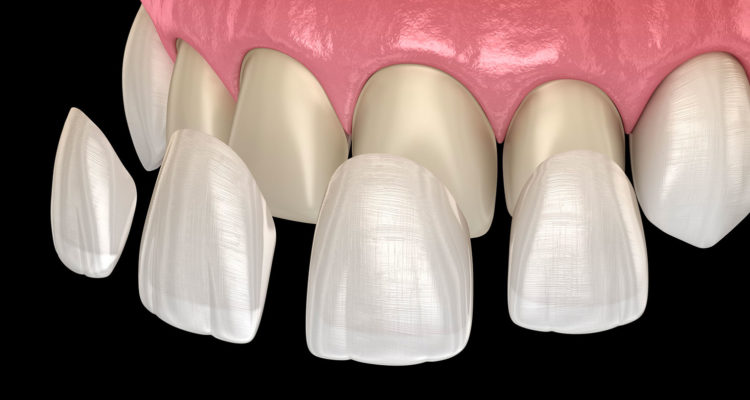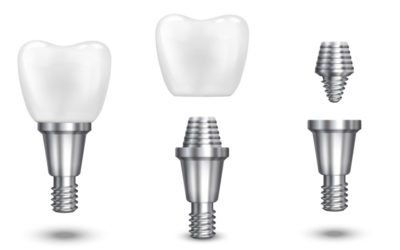
How do you maintain dental veneers over time?
Dental veneers are winning over more and more people in their quest for a natural, radiant smile. Offering a discreet solution for correcting various aesthetic imperfections, it combines effectiveness and practicality. But, like all aesthetic innovations, the secret to durability lies in daily maintenance. Knowing how to preserve the beauty and longevity of these little dental jewels really does make the difference to long-term results.
Dental veneers: definition, description and common indications
A dental veneer is a thin film made mainly of ceramic, composite or resin. It covers the visible part of the tooth to mask defects and improve the appearance of the smile. By providing a new surface for the teeth, it effectively corrects a variety of problems without requiring invasive treatment or altering the natural structure.
Main indications include stubborn stains, slight discoloration, superficial cracks, interdental spaces or chipped teeth. Thanks to their finesse and the choice of materials used, veneers meet a wide range of aesthetic needs, transforming the smile in a discreet and natural way.
What materials are used to make dental veneers?
The choice of material has a direct influence on durability, transparency and final appearance. Among the available options, three main families dominate: ceramic, composite and resin. Each offers distinct advantages in terms of strength, cost and aesthetics.
- Ceramic: highly resistant, renowned for perfectly imitating the natural shade of the tooth.
- Composite: a versatile material that allows quick corrections and is often more affordable to install.
- Resin: an economical alternative, ideal for temporary or transitional solutions.
Each material has its own advantages in terms of price, appearance and longevity. Ceramic veneers remain the leading choice for their robustness, while composite is suitable for tighter budgets or one-off needs.
Fitting a dental veneer: techniques and tooth preparation
What are the steps involved in applying a dental veneer?
The procedure begins with a detailed consultation to identify the aesthetic corrections required and to validate the patient's expectations. In the majority of cases, the placement of veneers involves minimally invasive procedures thanks to the use of the latest techniques, ensuring comfort and safety.
Depending on the clinical situation, tooth preparation may require delicate enamel removal (grinding) to ensure optimal veneer adhesion. This step is generally painless and respects the integrity of the tooth.
What benefits can you expect from this technique?
This meticulous care ensures a harmonious, natural and personalized result. The major advantage is maximum preservation of the original tooth, with a gentle procedure and no marked pain.
In addition to immediate visual improvement, patients benefit from renewed confidence, and rediscover the pleasure of smiling, sharing and enjoying every moment to the full.

Practical tips for maximizing the longevity of dental veneers
Daily oral hygiene: what are the best habits to adopt?
Effective brushing twice a day is essential, ideally with a soft-bristled brush to avoid damaging the veneer structure. The use of dental floss or interdental brushes limits plaque build-up around and under the edges, reducing the risk of cavities or irritation.
A non-abrasive toothpaste protects the shiny surface of veneers, preventing premature wear. We also recommend rinsing the mouth after consuming acidic beverages (juice, soft drinks), to preserve their brilliance.
Eating habits to avoid
Limiting consumption of particularly sticky, hard or highly pigmented foods significantly prolongs the freshness of the smile. Caramelized sweets, nuts and certain dried fruits exert excessive pressure, which can crack the veneer.
Reducing the consumption of strongly colored beverages (coffee, red wine, black tea) helps to preserve the original color and prevent progressive yellowing. Finally, banishing bad habits such as nibbling pens or opening sachets with your teeth protects against micro-cracks or untimely peeling.
Cost, durability and alternatives to dental veneers
The price of a dental veneer depends on the material chosen, the number of teeth to be treated and the technical nature of the procedure. Ceramic is the most expensive option, but offers the longest service life, up to 10 to 15 years with regular maintenance. Composite veneers, on the other hand, are less costly and slightly less durable.
Alternatively, tooth whitening, crowns or orthodontic treatment are interesting options, depending on the desired correction. Each has its own strengths and limitations in terms of aesthetics and invasiveness.
Why consult a professional for veneer maintenance?
Having your dental veneers checked regularly by a specialist dentist helps to prevent complications such as delamination, decay or aesthetic alterations. A professional quickly detects the first signs of wear or embrittlement, enabling early and appropriate intervention.
At Centre Dentaire Champel, every patient benefits from comprehensive support, from initial diagnosis to post-treatment follow-up. Making an appointment at an experienced facility ensures that results are optimally maintained, and prevents any incidents in the long term.
Frequently asked questions about the care and durability of dental veneers
How long does a dental veneer last with proper care?
The lifespan of a dental veneer varies according to the material used and hygiene habits. With careful maintenance, ceramic models can retain their appearance for 10 to 15 years. Composite versions last an average of 5 to 7 years before requiring touch-up or replacement.
Here are a few tips on how to prolong their life:
- Daily practice of proper brushing
- Regular dental check-ups
- Avoid shocks, hard chewing and abrasive substances
What products or tools should I use to clean my dental veneers properly?
To preserve the brilliance and durability of a dental veneer, we recommend :
- Toothbrushes with soft bristles
- Low-abrasive toothpastes
- Dental floss or adapted interdental brushes
Avoid the use of bleaching powders or pastes that are too granular, which could dull the surface.
Can a veneer that has come loose or cracked be repaired?
Yes, a dentist can often reattach a detached veneer if there is no significant damage. If the veneer is cracked or broken, a replacement is preferable to ensure aesthetic and functional integrity. A quick visit to the practitioner will help you choose the right solution and limit secondary complications.
The most common cases requiring repair :
- Detachment following food shock
- Crack caused by a minor accident
- Micro-wear visible to the naked eye
How do you know if veneers are not suitable or are showing premature wear?
Warning signs include discomfort when chewing, the appearance of a gap between the veneer and the gum, unusual color changes or a feeling of roughness. If one or more of these symptoms persist, consulting a dentist as soon as possible will prevent the problem from worsening and enable the necessary corrections to be made, depending on the nature of the diagnosis.
Discover also the Centre Dentaire Lancy and the Centre Dentaire Chêne-Bourg





